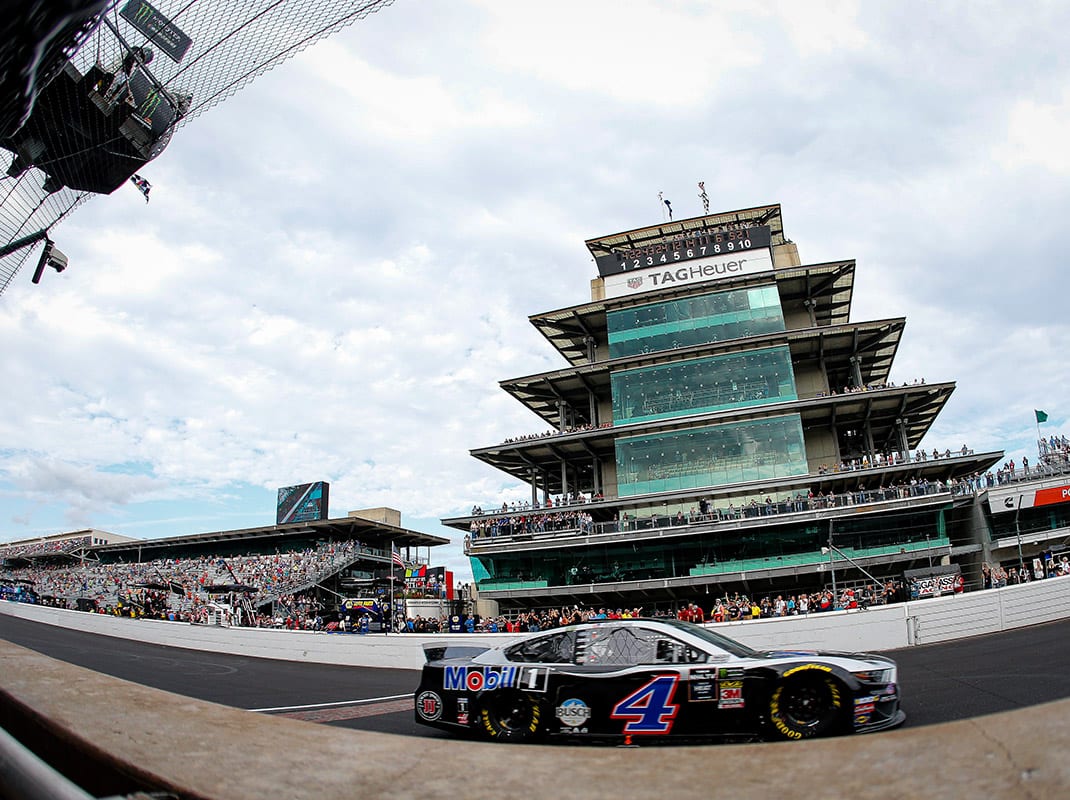
Perhaps the schedule item that has the most intriguing potential is the first weekend doubleheader for the Cup Series, which will take place on June 27-28 at Pennsylvania’s Pocono Raceway.
You heard that right, the Cup Series will race twice in the same weekend, on different days, at the same track. The NASCAR Gander RV & Outdoors Truck Series will be the companion race on Friday at Pocono and the NXS will be the companion race on Saturday, making it a jam-packed weekend of racing at the unique triangular-shaped 2.5-mile track.
While it is something racing series have done in the past — Indy Car does it every year at Belle Isle for the Detroit Grand Prix — it’s the first time NASCAR will hold a doubleheader. It is the trail balloon to test whether or not such an event increases excitement for the series, and also addresses the need to have a pair of races at some tracks each season. Pocono has been a cornerstone of the NASCAR schedule since the early 1970s, holding down the Northeastern market alongside Watkins Glen (N.Y.) Int’l and New Hampshire Motor Speedway.
Daytona Int’l Speedway remains the kickoff point for the season with the 62nd annual Daytona 500, but its traditional July 4 summer date has been given to another legendary facility — Indianapolis Motor Speedway. The annual Brickyard 400 will run on July 5 at the 2.5-mile Indy oval, while Daytona’s summer race moves to Aug. 29.
That latter date promises to ratchet up the intensity heading into the playoffs, as the 400-mile event will be the final race of the regular season. Think of that: a superspeedway race as the final chance to make the playoffs and potentially have a chance to win a championship.
There have been small changes of late as the sport adjusts to new realities following the global economic downturn of the late 2000s. Indy’s date has moved twice in an effort to find the sweet spot for the iconic Brickyard event. Finding it a home on a holiday weekend makes sense and swapping the traditional date with Daytona satisfies the marquee nature of events at those two tracks.
The route doesn’t get a lot easier once the playoffs start this year, either.
The first race of the playoffs will occur at Darlington (S.C.) Raceway with the Southern 500. Richmond (Va.) Raceway’s brand of exciting short-track racing will be the second race of the first round, setting up a monster finale to that first round at Bristol (Tenn.) Motor Speedway. It is Bristol’s first appearance as a playoff track, which puts a whole new spin on the second trip to Thunder Valley.
Another wild card this season is the elimination race for the Round of 12, which will be on Charlotte Motor Speedway’s ROVAL. Last year, the first elimination race took place on the hybrid roadie inside Charlotte Motor Speedway and produced a classic elimination race, so moving it up one round to the Round of 12 makes perfect sense.
Before the teams reach The ROVAL, however, there’s another challenge to meet — Talladega (Ala.) Superspeedway. Going from a drafting duel to a road course is another action multiplier for the 2020 schedule.
Depending on the success of the 2020 schedule in terms of excitement, the stage has been set for the 2021 slate, which will be arguably the most important season in many years for NASCAR, its fans and its future. The colossus that is the NFL plays a role in it too, as the earlier the season is over, the fewer times NASCAR’s TV partners have to run events head-to-head. Societal changes mean shorter attention spans, overall, given the rise of mobile devices and other things to do.
The 2020 schedule sets in motion NASCAR’s plans to change with the times and increase its competitiveness in an age when less is really very much more.
It all starts this month at Daytona and will end in November in the desert near Phoenix. The implications of what this year means to NASCAR’s future will likely be much clearer when the checkered flag waves at Phoenix Raceway.
